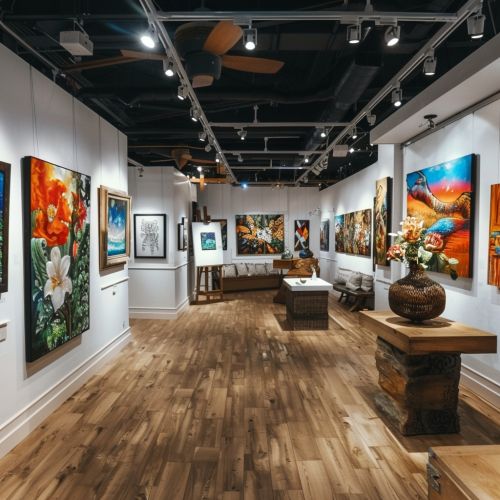Cognitive Psychology and Art
Cognitive Psychology and Art
Cognitive psychology is the scientific study of mental processes such as perception, memory, reasoning, and problem-solving. When applied to the field of art, cognitive psychology provides insights into how individuals perceive, interpret, and respond to artistic stimuli. This article delves into the intricate relationship between cognitive psychology and art, exploring various cognitive processes involved in the creation and appreciation of art.

Perception and Art
Perception is a fundamental cognitive process that involves the interpretation of sensory information to represent and understand the environment. In the context of art, perception plays a crucial role in how viewers experience and interpret visual artworks.
Visual Perception
Visual perception involves the processing of visual stimuli through the eyes and brain. Artists often manipulate elements such as color, light, and composition to guide viewers' attention and evoke specific emotional responses. The study of visual perception in art includes understanding how the brain processes elements like color, depth, and gestalt principles.
Auditory Perception
While visual art is the most commonly discussed, auditory perception is also significant in the realm of art, particularly in music and sound installations. Cognitive psychology examines how individuals perceive and process sound, including aspects like pitch, rhythm, and timbre.
Memory and Art
Memory is another critical cognitive process that influences how art is created and experienced. There are several types of memory that play a role in the artistic process:
Working Memory
Working memory is the ability to hold and manipulate information over short periods. Artists rely on working memory to plan and execute their work, keeping track of various elements and making real-time adjustments.
Long-Term Memory
Long-term memory stores information over extended periods. This type of memory is essential for artists to retain knowledge of techniques, styles, and influences. Additionally, viewers' long-term memories of past experiences and cultural knowledge shape their interpretation and appreciation of art.
Emotion and Art
Emotion is deeply intertwined with both the creation and reception of art. Cognitive psychology explores how art can evoke emotional responses and how these emotions influence cognitive processes.
Emotional Expression
Artists often use their work to express emotions, whether consciously or unconsciously. Cognitive psychology studies how different artistic elements, such as color, form, and composition, can convey emotions and affect viewers' emotional states.
Emotional Response
Viewers' emotional responses to art are influenced by their personal experiences, cultural background, and individual differences. Cognitive psychology examines how these factors contribute to the emotional impact of art and how emotions can enhance memory and perception.
Creativity and Art
Creativity is a hallmark of artistic endeavor, and cognitive psychology seeks to understand the cognitive processes that underlie creative thinking and problem-solving.
Divergent Thinking
Divergent thinking is the ability to generate multiple solutions to a problem. This type of thinking is crucial for artistic creativity, allowing artists to explore various possibilities and create innovative works.
Convergent Thinking
Convergent thinking involves narrowing down multiple ideas to find a single, optimal solution. In art, this process is essential for refining and finalizing a piece, ensuring that all elements work together harmoniously.
Aesthetics and Art
Aesthetics is the branch of philosophy that deals with the nature of beauty and taste. Cognitive psychology contributes to the understanding of aesthetics by examining how individuals perceive and evaluate beauty in art.
Aesthetic Judgment
Aesthetic judgment involves the evaluation of artistic quality and beauty. Cognitive psychology studies the factors that influence aesthetic judgment, including cultural norms, personal preferences, and cognitive biases.
Aesthetic Experience
The aesthetic experience is the emotional and intellectual response to art. Cognitive psychology explores how different elements of art contribute to the overall aesthetic experience and how this experience can vary among individuals.
Art Therapy
Art therapy is a therapeutic practice that uses art-making to improve mental health and well-being. Cognitive psychology provides insights into how art therapy can facilitate emotional expression, reduce stress, and enhance cognitive functioning.
Therapeutic Processes
Art therapy involves various therapeutic processes, such as self-expression, reflection, and communication. Cognitive psychology helps to understand how these processes can lead to psychological healing and personal growth.
Cognitive Benefits
Engaging in art-making can have cognitive benefits, such as improving attention, memory, and problem-solving skills. Cognitive psychology examines how these benefits arise and how they can be harnessed in therapeutic settings.
Conclusion
The intersection of cognitive psychology and art offers a rich field of study that enhances our understanding of both disciplines. By exploring the cognitive processes involved in the creation and appreciation of art, we gain deeper insights into the human mind and the profound impact of artistic expression.
